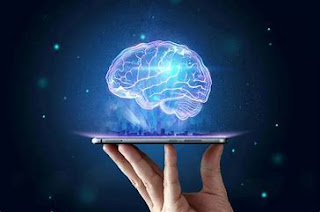About AI technology
- Natural Language Processing (NLP): AI systems are becoming increasingly proficient at understanding and generating human language, which is enabling new applications such as virtual assistants, chatbots, and automated customer service.
Computer Vision: AI systems are getting better at understanding and interpreting images and videos, which is leading to new applications such as self-driving cars, drones, and security cameras.
Deep Learning: Deep Learning is a subfield of machine learning that is based on artificial neural networks, which are modeled after the human brain. This technology is being used for image and speech recognition, natural language processing, and more. Deep Learning
Reinforcement Learning: Reinforcement Learning is a type of machine learning that focuses on training AI agents to make decisions by maximizing some form of reward signal. This technology is being used to train robots to perform complex tasks and to improve the performance of AI systems in games and other applications.
Generative models: AI systems are getting better at generating new and diverse data, such as images, text, and sound. This technology can be used for tasks like creating new images of objects, writing texts or composing music.
Edge AI: Edge AI is the application of AI technology on devices at the edge of the network, such as smartphones, cameras, and IoT devices. This allows these devices to process data locally, reducing the need for constant internet connectivity and enabling new applications such as real-time object recognition and facial recognition.
Explainable AI (XAI): XAI is a subfield of AI that focuses on developing AI systems that can provide understandable and transparent explanations of their predictions and decision making. This technology is becoming increasingly important as AI is being used in more critical and sensitive applications such as healthcare, finance, and criminal justice.
How AI technology works?
Machine Learning: This is a method of training AI systems using large amounts of data, without explicitly programming them. Machine learning algorithms can learn from the data and improve their performance over time. There are several types of machine learning, including supervised learning, unsupervised learning, and reinforcement learning.
Neural Networks: This is a method of training AI systems based on the structure and function of the human brain. Neural networks consist of layers of interconnected "neurons" that process and transmit information. They can be used for a wide range of tasks such as image recognition, speech recognition, and natural language processing.
- Expert Systems: This is a method of creating AI systems that mimic the knowledge and decision-making abilities of human experts in a specific field. Expert systems consist of a knowledge base of facts and rules, and a reasoning engine that applies this knowledge to solve problems.
Evolutionary Computation: This method involves the use of evolutionary algorithms, such as genetic algorithms and evolution strategies, to optimize the performance of AI systems.
Symbolic Reasoning: This method uses a symbolic representation of knowledge and logic-based reasoning to make inferences and solve problems.
Once the AI system is trained, it can then be used to make predictions, classify data, control devices, and perform other tasks. The system's performance is continually monitored and improved as it receives more data and feedback.
It's worth noting that AI technology is an interdisciplinary field, it draws from mathematics, computer science, psychology, linguistics, and other fields. And it's a challenging field as it's constantly evolving, with new breakthroughs and applications emerging all the time.
Does AI take away jobs
AI has the potential to automate certain tasks and make them more efficient, which can lead to some jobs becoming obsolete. However, it's also possible that AI can create new jobs and opportunities, as well as increase productivity and improve people's lives.
In some cases, AI can automate repetitive or dangerous tasks, allowing workers to focus on higher-level tasks that require human skills such as creativity, problem-solving, and decision making. For example, self-driving cars can take over the task of driving, allowing drivers to focus on other tasks such as monitoring the vehicle or providing customer service.
In other cases, AI can be used to augment human abilities rather than replace them. For example, AI-assisted diagnosis can help doctors make more accurate diagnoses, and AI-assisted design can help engineers create better products.
However, the effect of AI on job market is not a simple one, it's depend on many factors such as the nature of the job, the industry, and the country. Some jobs that are highly repetitive or routine-based may be at higher risk of automation, while jobs that require human skills such as creativity, critical thinking, and emotional intelligence may be less affected.
It's important for governments, businesses, and individuals to be aware of the potential impact of AI on the job market and to take steps to prepare for the changes that may come. This can include investing in education and training programs that teach the skills that will be in demand in the future, as well as creating policies that support the transition of workers to new roles and industries.
In short about AI in hindi
AI को कुछ कामों को स्वचालित करने और उन्हें अधिक कुशल बनाने की क्षमता होती है, जिससे कुछ नौकरियों को अस्थाई हो सकता है। हालांकित कि संभवतः, AI नए नौकरियों और अवसरों को बना सकता है, साथ ही उससे उत्पादकता और लोगों की जिंदगी को सुधारने का सुयोग हो सकता है।
कुछ मामलों में, AI अक्सर पुनरावर्तनीय या खतरनाक कामों को स्वचालित कर सकता है, जो कि कामकाजी को उनके कोशिशों पर ध्यान केंद्रित करने की अवसर प्रदान करता है,






.jpeg)



.jpeg)





